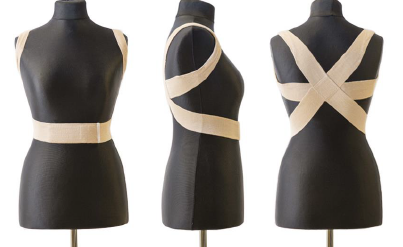Selected dynamic anthropometrics and body characteristics for posture corrector fit
DOI:
https://doi.org/10.25367/cdatp.2020.1.p96-103Keywords:
ergonomics, anthropometrics, posture, posture corrector, compression garment, human body 3D scanningAbstract
Correct body posture is a balanced musculoskeletal body position; however, today many people face severe posture defects, and their body posture may be far from a normal, causing progressive musculoskeletal deformities and pain, as well as affecting the functionality and appearance of the body. Human daily habits, lack of physical activities and overall a sedentary lifestyle cause such phenomena. The research focuses on studies of human body measurements and body characteristics while wearing posture-corrective equipment for the assessment of the effectiveness of different posture correctors (abbreviated as PoC).
Four test-persons were selected and scanned using 3D anthropometrical scanner in relaxed stand position wearing five different posture correctors for a prolonged period of time in order to determine the effectiveness and functionality of each PoC. Four distance (linear) human body measurements were gained to quantify postural changes - scapula position depth, upper torso position, shoulder projection height and hip-waist depth. General feedbacks on each subject impression of wearing PoCs were also received.
Correction of posture could serve as a preventive or treatment for spine-related problems; though, commercially available correctors could negatively affect wearer’s health due to non-conformity of the design and/or used material. Therefore, PoC selection and wearing procedures should be solved with more personalized and customized approaches.

Downloads
Published
How to Cite
Issue
Section
License
Copyright (c) 2020 Inga DABOLINA

This work is licensed under a Creative Commons Attribution-NonCommercial-NoDerivatives 4.0 International License.





